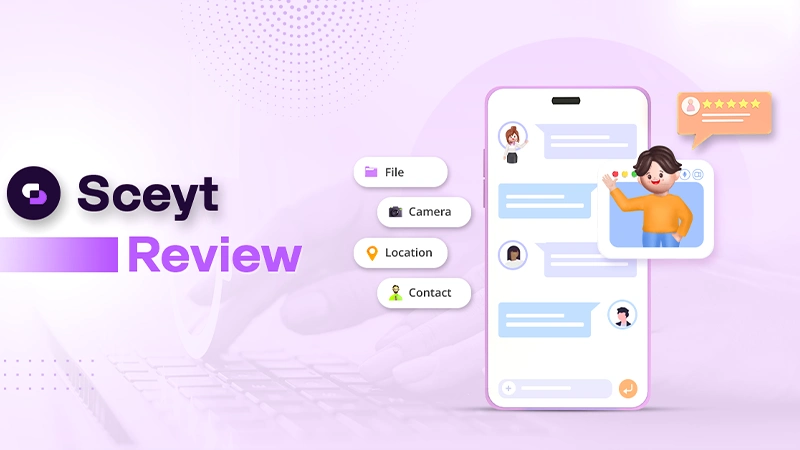How No-Code Improves Your Team’s Productivity?
The world of software development has changed. No longer are developers building applications for themselves, but instead, they’re working on teams of people who care about their work and want to be productive.
The solution? Build software using reliable best no code platforms in such a way that it allows anyone to contribute meaningfully to the code base, regardless of their background or technical ability.
It’s called no-code technology, and it’s how teams can avoid being stuck in silos and get things done faster than ever before!
In this article, we have described the 5 most impactful ways that no-code technology can improve your team’s productivity and reduce slow progress attitude, which is why many businesses benefit from it.
No-code Provides a Quick Feedback Loop.
One of the most important benefits of no-code development is that you can get up and running quickly. The time needed to create a prototype in conventional languages like Java, PHP, or Python can take days or weeks.
With no-code tools, however, it’s possible to build prototypes in hours instead of days.
This allows you to test your ideas with users and get quick feedback from them on things like usability and design before investing too much time into building an actual product.
Improved Collaboration and Quality.
When you make it easier for your team to collaborate and share knowledge, they can work faster and smarter.
No code has made it possible for teams of developers to use the same code base across different products.
This enables them to improve the quality of their work by testing new features in parallel or sharing knowledge through documentation and examples.
This increased speed also improves productivity because you don’t have to wait around while someone else finishes up their part before you start working on yours – instead, everyone has access at all times, so there’s no “last minute rush” trying to get everything done before the deadline hits!
There is No Need to be a Programmer.
One of the biggest advantages of working with no-code platforms is that they’re easy to use. The user interface is simple and straightforward, so even non-programmers can create their own applications.
This means there’s no need for a programmer—you can get started right away!
No-code platforms also make it possible for anyone on your team to create an app or website without any technical knowledge or experience developing software.
This can be especially helpful if you’re part of a small business with no budget for a full-time web developer.
No-code platforms also make it easy to create applications that are accessible to users with disabilities. The fact that there’s no need for coding means that anyone on your team can develop an application, regardless of their previous experience or level of technical knowledge.
Transparency and Accountability Through Automation.
Automation is an important part of the no-code movement. It makes it possible to automate processes that would have previously required manual intervention, and this helps to make processes more efficient.
For example: if you’re building a website for your business, you might be able to have the content created by an automated system (like a machine learning algorithm) instead of by hand. This will save time and money and reduce errors in the creation process.
In addition to saving time and money on one project at a time—and therefore improving productivity as well—automation also helps teams work together better because they can collaborate on different parts of projects at once without having any overlap between different members’ tasks or responsibilities.
Eliminate Manual Tasks, and Delegate Faster.
In a no-code world, the number of manual tasks you have to do is reduced. This will make your team more efficient and productive.
For example, if there’s some repetitive task that needs to be done over and over again for your product to function properly—like creating a new user account or updating their profile information—you’ll have an easier time automating it using no-code techniques like APIs and microservices.
With these tools, you can create an algorithm that takes care of this repetitive action without human intervention (e.g., copying/pasting information from one form into another).
Another great way no-code makes delegation easier is by allowing people on their teams to share their knowledge with others who aren’t necessarily working directly on those projects right now but might be able to help out later down the line when they start seeing issues arise due to miscommunication between different departments within an organization itself!
The No-Code Movement Offers a Convenient Path to Set Business Higher!
The no-code movement offers even non-programmers an opportunity to code, test, and deploys applications from start to finish by themselves.
The no-code movement is not just a trend; it is a new approach to software development that is changing the way businesses are built. No code means you do not have to write any of the code but instead rely on your team and their experience in building the project.
This can be a huge benefit for companies because they can hire developers who already know how to work together, and they’ll be able to keep costs low because they don’t have to pay for developers’ salaries or benefits.
Conclusion
If you’re struggling to find more time, then I hope these tips are helpful to you! If they aren’t and you’d like to get in touch with me, feel free to reach out at [email protected].
No-code is a great way to get more people involved in the development process. For example, if you want to delegate a task that requires coding knowledge but not necessarily being an expert in coding itself, no code allows anyone on your team to do it without needing any technical skills at all!
Share
















